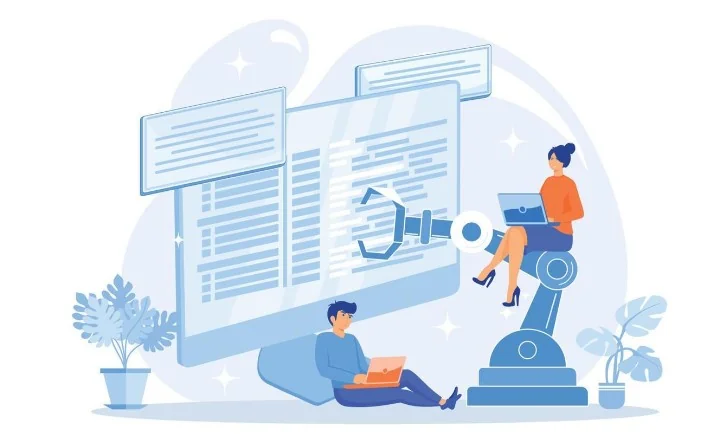Multi-Tenant Clouds The Blueprint for SaaS App
It is no secret that cloud computing has revolutionized the way businesses operate. By allowing enterprises to access data and applications over the internet, cloud computing has enabled companies to save costs, scale quickly, and stay competitive. One of the most popular cloud computing models is the Software-as-a-Service (SaaS) model. This model allows companies to access and use applications on a subscription basis, without having to purchase and maintain the hardware and software required to run the applications. The key to the success of SaaS applications is the multi-tenant cloud. This powerful technology allows multiple tenants to access and share the same resources. In this blog post, we'll discuss what a multi-tenant cloud is, the benefits it offers, and how to design and build a multi-tenant cloud architecture.
Table of content
Table of Contents
It is no secret that cloud computing has revolutionized the way businesses operate. By allowing enterprises to access data and applications over the internet, cloud computing has enabled companies to save costs, scale quickly, and stay competitive. One of the most popular cloud computing models is the Software-as-a-Service (SaaS) model. This model allows companies to access and use applications on a subscription basis, without having to purchase and maintain the hardware and software required to run the applications. The key to the success of SaaS applications is the multi-tenant cloud. This powerful technology allows multiple tenants to access and share the same resources. In this blog post, we’ll discuss what a multi-tenant cloud is, the benefits it offers, and how to design and build a multi-tenant cloud architecture.

What is a Multi-Tenant Cloud?
A multi-tenant cloud constitutes a cloud computing milieu wherein numerous organizations, or tenants, share an identical infrastructure. All tenants utilize a common resource pool, encompassing software, networks, and storage. Contrasting with a single-tenant cloud, where each tenant possesses dedicated resources, a multi-tenant cloud organizes tenants into logical “pools” or instances, ensuring isolation while granting access to shared resources.
The primary merit of a multi-tenant cloud resides in its capacity to facilitate resource sharing among multiple organizations, thereby curtailing resource duplication and reducing costs. This characteristic renders multi-tenant clouds particularly suited for SaaS applications, designed with the intent of accommodating multiple tenants.
Benefits of a Multi-Tenant Cloud
There are several key benefits to using a tenant cloud for SaaS applications, including:
- Companies can reduce their costs by sharing resources on a multi-tenant cloud, as they don’t have to purchase and maintain their own hardware and software.
- Tenant clouds enable companies to quickly add and remove resources as needed, leading to easy scalability.
- Sharing resources on a multi-tenant cloud can improve application performance, as the cloud dynamically allocates resources based on each tenant’s needs, resulting in improved performance.
- Tenant clouds typically host on multiple servers, which provides greater redundancy and ensures high availability.
- Tenant clouds enable automated updates, guaranteeing that applications are always running the latest version.
Designing a Multi-Tenant Cloud
In the process of crafting a multi-tenant cloud architecture, multiple pivotal aspects warrant attention, encompassing the subsequent:
- Data Isolation: Ensuring the segregation of tenant data to prevent unauthorized access and maintain confidentiality.
- Scalability: Facilitating seamless expansion to accommodate growing tenant workloads and additional users.
- Performance: Optimizing resource allocation and usage to guarantee consistent performance for all tenants.
- Security: Implementing robust security measures, including encryption, authentication, and authorization, to safeguard tenant data and applications.
- Compliance: Adhering to relevant regulatory standards and industry best practices to maintain compliance and mitigate potential legal risks.
- Customizability: Providing tenants with the flexibility to tailor services and resources according to their specific requirements and preferences.
- Cost Efficiency: Striking a balance between resource allocation and pricing to offer a cost-effective solution for tenants while maintaining profitability.
Building Architecture
Upon finalizing the tenant cloud design, initiating the construction of the architecture becomes the subsequent priority. This process encompasses the selection of pertinent technology, including virtualization and containers, followed by infrastructure establishment.
When building the architecture, it’s important to consider the following:
- Networking: Networking is a key component of any cloud architecture. The network should be designed to ensure that tenants can securely access the resources they need.
- Storage: Storage is another key component of a tenant cloud architecture. It should be designed to ensure that tenants have the storage they need without sacrificing performance.
- Automation: Automation is essential for ensuring that the tenant cloud architecture is running optimally. Automation should be used for tasks such as provisioning new instances, managing resources, and deploying applications.
Tenant Cloud Security Considerations
Safeguarding data is of paramount importance when devising a secure multi-tenant cloud architecture. Incorporating security measures such as authentication and authorization, data encryption, and firewalls is essential. To thwart unwarranted access, tenant data storage should be segregated into distinct databases, fortified via access control lists (ACLs).
Adherence to secure coding best practices is mandatory for developers, as they must contemplate the security of applications operating within the tenant cloud. Periodic security assessments of applications are equally vital, ensuring the maintenance of robust protection.
Multi-Tenant Cloud Scalability
Multi-tenant clouds provide high scalability, enabling companies to swiftly adjust their resources based on their requirements. This scalability feature makes it an excellent choice for SaaS applications that necessitate regular addition or removal of resources. It is crucial to consider scalability during the architecture design of the tenant cloudto ensure that resources can be conveniently and promptly added or removed. Moreover, continuous monitoring of the tenant cloud is necessary to ensure optimal performance and efficient resource utilization, which will help ensure that it always meets the needs of its tenants.
Conclusion
Multi-tenant clouds empower SaaS applications by allowing multiple tenants to access shared resources, which reduces duplication and costs. Designing a tenant cloud architecture requires considering resource allocation, security, monitoring, and automation while ensuring the ability to add or remove resources easily. Additionally, security is critical in designing a tenant cloud architecture, including storing data in separate databases with access control lists and regularly testing applications for security. Companies can ensure a secure and scalable tenant cloud architecture by following these steps, enabling them to leverage the benefits of the cloud.


